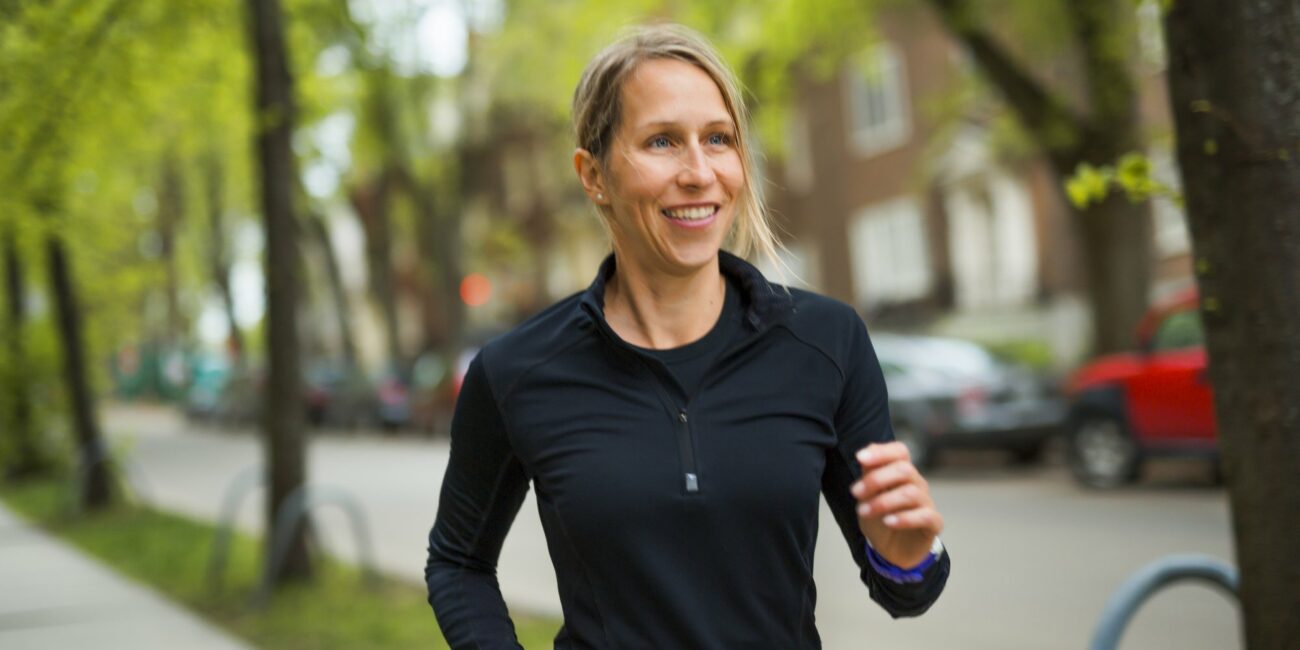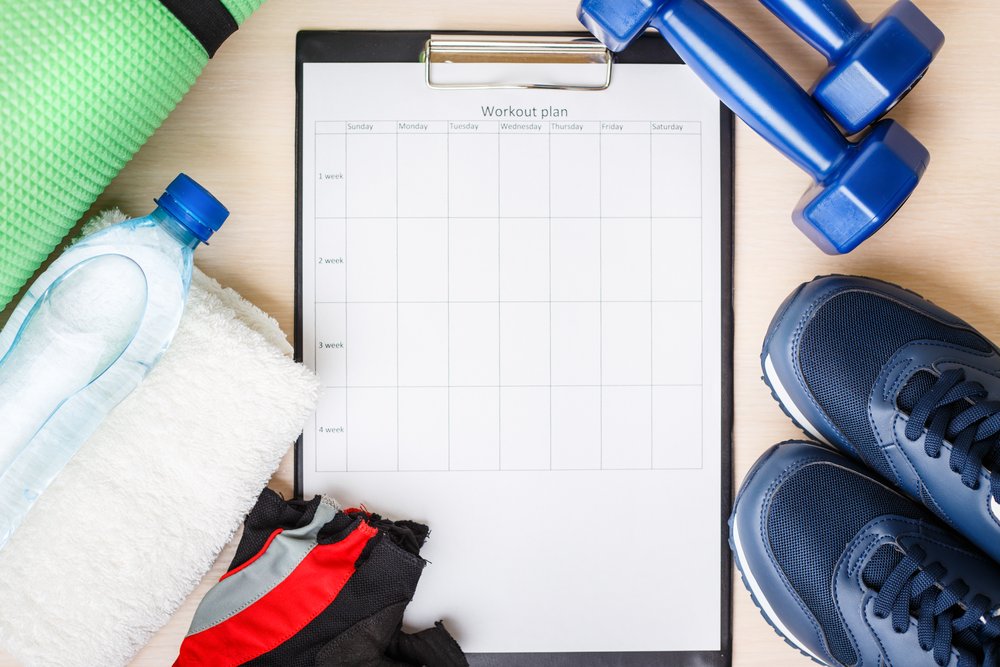How to Start Running After 40: Overcoming Challenges and Finding Success

Running in your 40s is a tried-and-true way to improve overall health. It boosts your metabolism, strengthens your immune system, and improves mental health. Running keeps your heart healthy and can even increase your longevity.
Also, it helps prevent cognitive decline, which is very important once you turn 40 and start losing 1% muscle every year.
Moreover, running is also a highly effective way to burn fat, tone up, and shed some pounds. The health benefits of running at 40 are truly extensive.
But lacing up for your first run might feel intimidating — especially if you’re starting out in your 40s.
Let’s take a look at three surefire ways to help you get started running to reach goals as effortlessly as possible.
It’s Never Too Late to Start Running: 3 Tips to Start Running After 40
Your age shouldn’t limit you. Buy those running hoses, develop a consistent running routine, start strength training, and see what you are able to achieve. Follow these 3 tips for the error-free strart.
#1 Get a running plan designed for you

Advertisement
Google how to start running, and you’ll be hit with endless running program options. But when it comes to losing weight and improving your health, you should avoid generic training plans – especially when you’re in your 40s.
Here’s why.
As we get older, many of the critical functions in our bodies start to decline drastically.
- Our metabolism starts to slow, causing weight gain.
- Metabolism-boosting hormone levels decline, which makes fat-burning less efficient.
- We lose muscle strength and elasticity, making us more prone to injuries.
- Our energy levels go down, decreasing our endurance and stamina.
- Our bodies lose flexibility and balance, making sprains and strains more likely.
That’s absolutely natural and happens to all of us as we age. But they shouldn’t be ignored. Each and every function determines how successful our fitness journey will be.
And that’s where one-size-fits-all running plans fall short – they don’t take you into account.
“A tailored program can really be the difference between achieving your goals or not,” says personal running coach Rory Thomas.
“To give yourself the best chance of success, you should get a professionally-designed running plan. This plan must consider your fitness level, physical ability, age, weight, and overall health. Not only will it help you lose weight faster, but it will also cost much less than treating injuries sustained while following a plan you can simply download from the internet.”
Pro tip: We’re all different, and generic running program can only take you so far. To reap the myriad of benefits that running has to offer, you should consult a personal running coach.
#2 Figure out the exact progression to prevent injuries
We often think that progression is not essential in the beginning. However, even if you are just starting to run for the first time, a plan based on the principle of progression is a must. It’s especially important when you reach your 40s and want to achieve your running goals safely and without injuries.
In order to progress uninjured, you should design a plan based on the 3 phases of learning:
- The cognitive phase. You reach this phase as soon as you start running. This phase is often associated with tiredness. A key in this phase is not progressing too fast and concentrating on the correct shape and technique.
- The associative phase. You reach this phase when you start running more smoothly and efficiently. In this phase, you can progress much quicker if you adjust your program correctly. Keep in mind that it’s essential to adjust your running plan the right way. Otherwise, it can lead to injuries.
- The autonomous phase is the last one. In this phase, you start running effortlessly. If you don’t adjust your plan to meet your current state, you stop progressing.
To reach your running goals without getting injured, you should follow a detailed running plan customized for you. This plan must include a schedule with the right running workouts based on your current learning phase.
Pro tip: Professional trainers can make plans tailored to your learning phase.
#3: Include different types of running

If you are just thinking about starting your running journey, you might be unaware that running can be very versatile. There are many different running training methods. Mixing them up can significantly improve your overall health and reduce injury risks.
For example, longer runs increase the volume of blood your heart pumps. And speed runs, if done right, reduce the risk of injuries by training muscle fibers. Most injuries occur when runners are not in the proper condition, try to take on too much too soon, or rapidly increase their speed.
Running in the same way every day can increase the risk of repetitive stress injury and fitness problems. Furthermore, you can get bored.
When starting your running journey, go to the running store and buy comfortable running shoes. With the proper clothing you can achieve even more.
In fact, Rory Thomas says that failing to mix up your exercise routine is one of the biggest mistakes he sees beginner runners make: “Mixing up different types of running and even strength training improves the way you move, your biomechanics, and your running economy. That way, you can run much more comfortably and reach your goals faster.”
There are 8 basic types of runs that runners of all levels practice:
- Base run – short-to-moderate run at your normal and natural pace.
- Fartlek run – a combination of fast and slow running.
- Hill repeat run – sprinting up the hill and jogging back.
- Interval run – low-to-moderate and high-intensity running.
- Long run – running focused on distance (approximately 10 miles).
- Progression run starts at your normal pace and gradually builds up your speed. In the end, you should be running at your fastest.
- Tempo run – 20 minutes or more of running at high speed.
- Recovery run – a relatively short run performed at an easy pace.
The different running workouts you need depend on your level and condition.
The key is to make sure you understand what each type of running offers and how you can best leverage it for your running goals. You can even combine two of them within a single session.
The safest and easiest way to do that is to follow a personalized running plan created just for you.
#3: Use different types of running workouts to maximize the benefits of running and improve your fitness levels. But you must know the exact types of running you need to include to achieve the best results. The guesswork leaves room for error, and errors can have major negative effects on your health. So you should always seek personalized advice that takes your fitness level and age into account.
Time doesn’t stop for anybody, and with age, your body will undergo many changes. But you can take control and successfully lose weight when you’re over 40.
We’re all different, and what’s right for others might not be suitable for you.
Sticking to the right diet and exercise regimen when you turn 40 is imperative for a couple of reasons:
- One, you’ll boost longevity and reduce the risk of age-related diseases.
- Two, it’ll help to regain that youthful energy and confidence.
- Three, it’ll also help to take more control of your body and develop healthy eating habits that will most likely add YEARS to your life.
Conclusion
With numerous physical and mental benefits, running is an excellent way for older runners get fit and toned, boost their self-confidence, and regain that youthful energy from back in the day. Buy good running shoes and join local running club!
But we’re all different, and what’s right for others might not be suitable for you. So taking the right approach is important if you want to reap the most rewards.
Think of it like this: if there was just one training plan for all, it’d be similar to having one-size-fits-all clothing. But there’s only one you – with your unique goals, needs, and wants.
As you age, your needs, goals, and fitness level also change, and to achieve maximum results, your running plan needs to reflect that.
Comments (3)
Leave a comment
Thank you for your comment







OMG, this app is a life changer. After being lucky enough to remain the same weight my entire adult life, my luck indeed changed when I reached 43 and gained 30 pounds over a year. I was depressed, felt unattractive, hated that I had to purchase such large clothing, and didn’t feel like myself. I have lost 37 lbs on Joggo and finally feel...
OMG, this app is a life changer. After being lucky enough to remain the same weight my entire adult life, my luck indeed changed when I reached 43 and gained 30 pounds over a year. I was depressed, felt unattractive, hated that I had to purchase such large clothing, and didn’t feel like myself. I have lost 37 lbs on Joggo and finally feel attractive again! I cannot recommend Joggo enough.
I have long been looking for a program to help me get into shape, especially when I reached 42. For me, Joggo is exactly what I needed and more. A very detailed, informative program built for my body needs and preferences without the cost of a personal trainer. The app has really helped put structure into my fitness routine and lose weight. Couldn’t be...
I have long been looking for a program to help me get into shape, especially when I reached 42. For me, Joggo is exactly what I needed and more. A very detailed, informative program built for my body needs and preferences without the cost of a personal trainer. The app has really helped put structure into my fitness routine and lose weight. Couldn’t be more pleased.
Joggo has literally changed my life. It’s helping me understand and work through the special challenges I’ve started facing when I got 40 while trying to move my body. I am feeling more empowered and strong every day.